The Zeltbahn 31 was developed in 1931 and found
its origin in the square Reichswehr tent.
It is made of a water repellent material called Makostoff and is
imprinted with a camouflage
pattern which is also known as Army Splinter Pattern (Heeres Splitter
Muster 31).
Another phrase used was: Buntfarbenaufdruck.
As can be seen on the right of the picture below, completely field grey examples existed.
These are
mostly early war shelter quarter given to other organisations then the military.
Also noticable is the variety of shades encountered.
Basically the shelter quarter was
used for 2 purposes: to make a tent and as a rain poncho,
but the shelter quarter could be used for a variety of purposes.
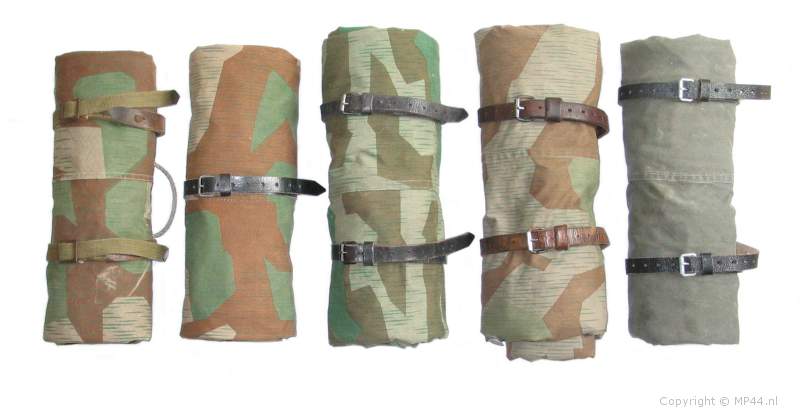
As shown below the shelter quarter
had 2 different colours on each side.
These colours are also called Hellerer Buntfarbenaufdruck and Dunklerer
Buntfarbenaufdruck.

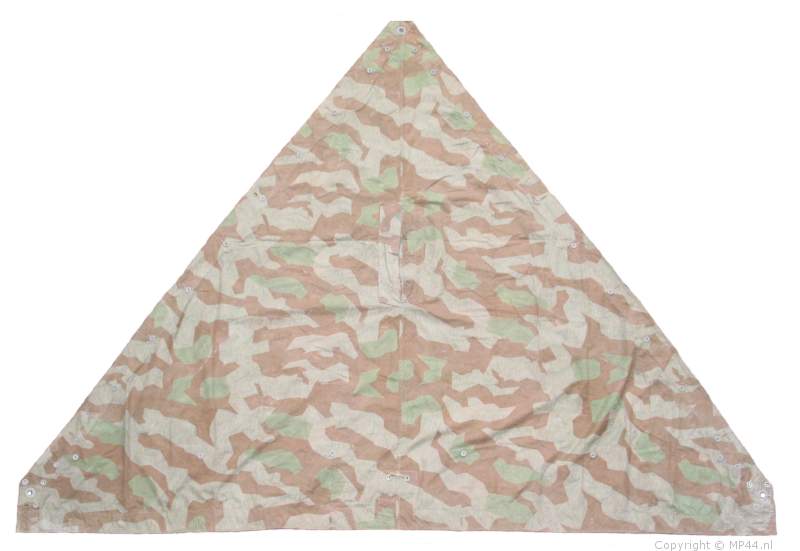
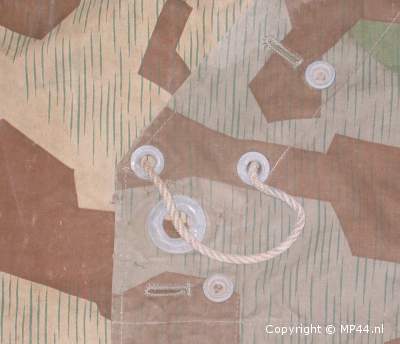
On the left, the two shades of a shelter quarter are shown.
As can be seen on the top image, there exist a lot of different colour variations. This all depends on the wear and exposure to sunlight.
Some late war examples have one shade on both sides
The dimensions of the triangular shelter quarter are 250 x 200 x 200 cm.
Each side had a row of 11 aluminium,
zink or steel buttons which are used to connect two shelter
quarters to eachother.
On the base 1 button, and a row of 6
buttons, are used to connect a tent made of four quarters (Viererzelt)
to a so called house tent (Hauszelt)
In the middle, there is slit (also with button) for the wearer's head when used as a poncho.
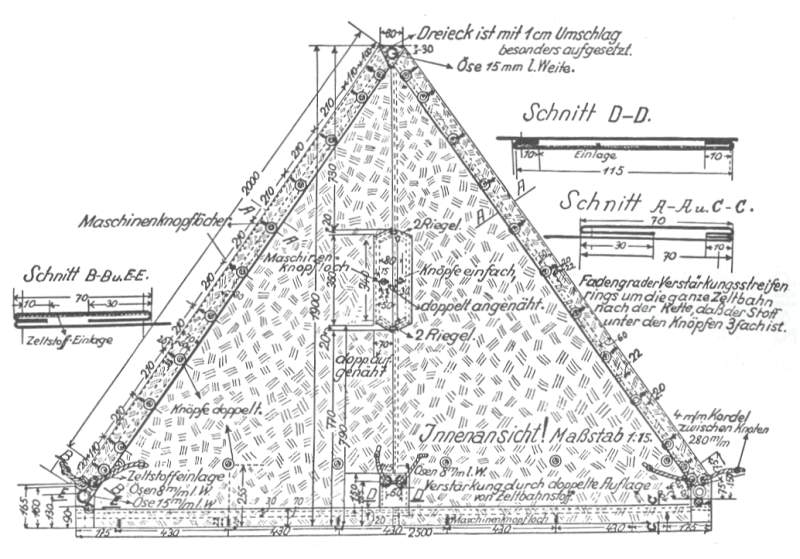
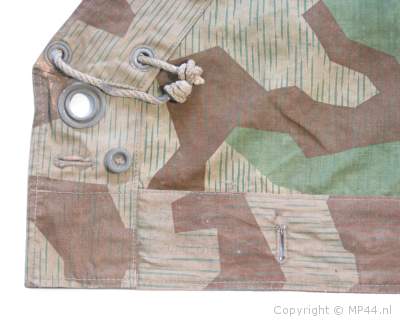
Left: detail of the lower leftcorner.
Clearly shown are :
-
the two small (8 mm) gromets with rope (28 cm long)
-
the bigger (15 mm) gromet
-
3 holed zink button and buttonhole
-
vague: maker mark
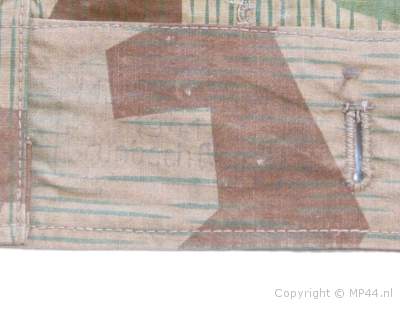
The makers stamp, unfortunately not too clear.
M ????
1941
Grünbach ???
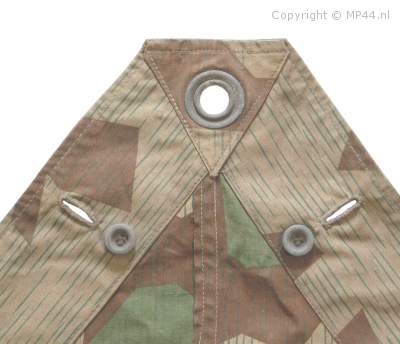
Detail of the top part with 15mm grommet.
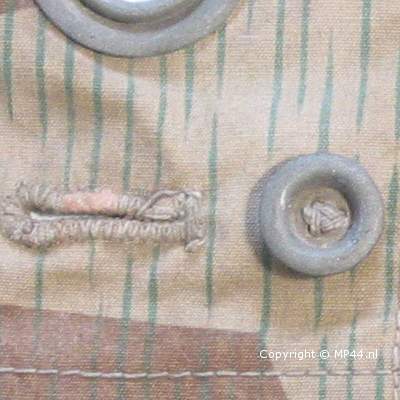
Detail of 3 hole zink button and buttonhole.
These buttons are all double sides which means
that there is also a button on the other side.
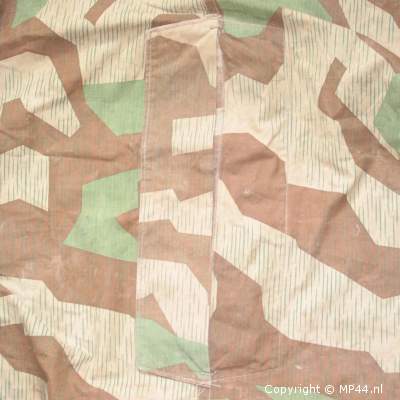
Detail of head opening (closed).
The head opening is aprox. 36 cm.
When closed there are a few layers so is is waterproof when used as a tent.
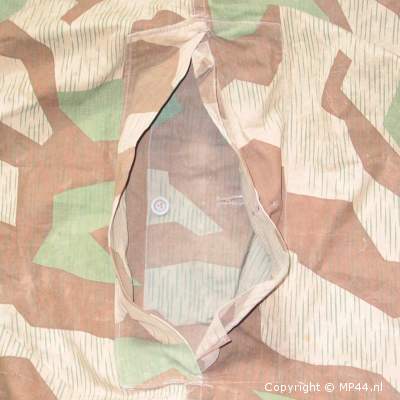
Detail of head opening (opened up one side).
This could also be buttoned up as can be seen.
note: these are one sided buttons.
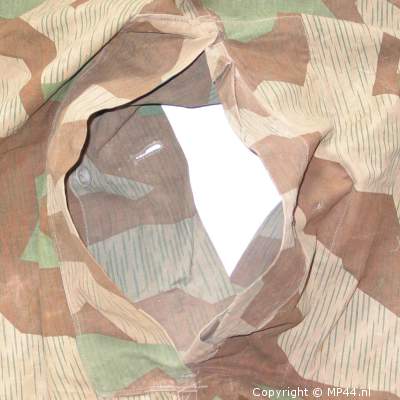
Detail of head opening (opened up both sides).
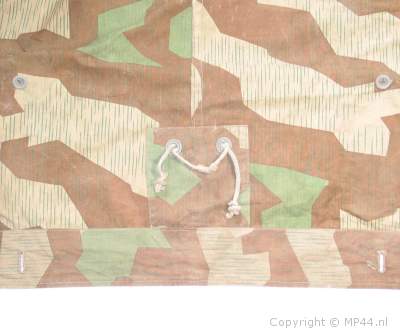
Detail of the lower middle part.
The reinforced part with the 8mm gromets and rope
are shown.Also shown are the buttons and button holes to form the "house tent"
Varieties
Ofcourse like with so many equipment items varieties existed.
Below is a late war R.B. numbered example.
This one has zink gromets, steel buttons and only one grommet for the 28 cm rope.
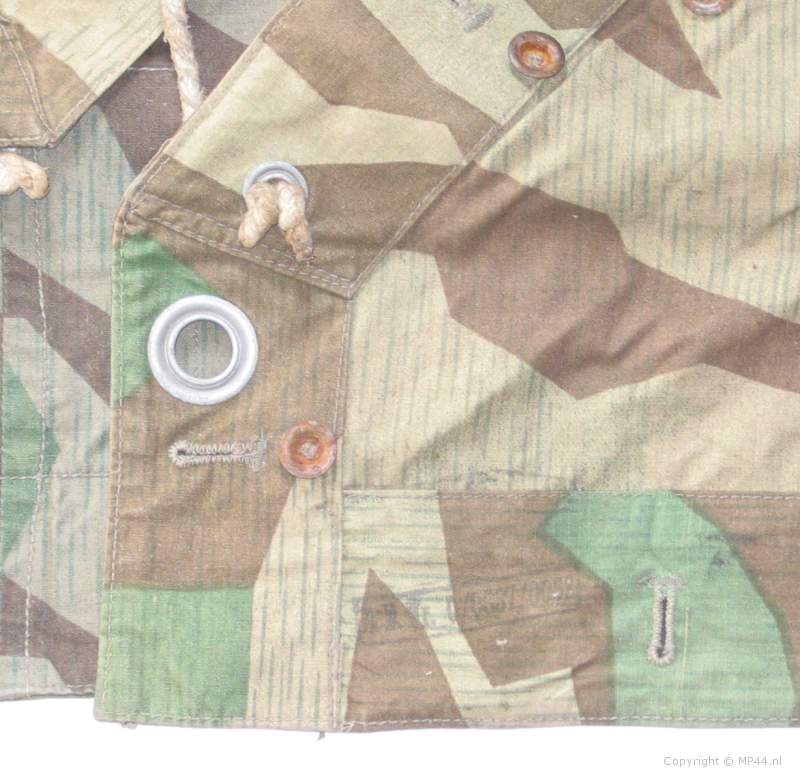
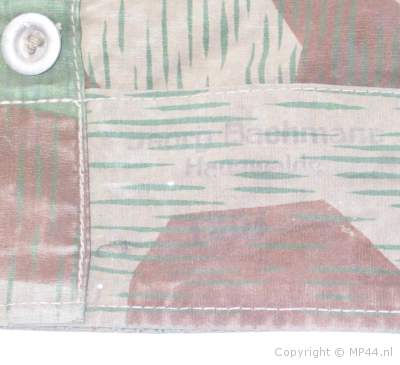
Sometimes shelter quarters has unit information on it
Like on this example with maker mark:
Georg Bachman
Hauswalde
1937

The following unit information was found:
I / Fl. R. 7
Flakst. Battr.
B. 37
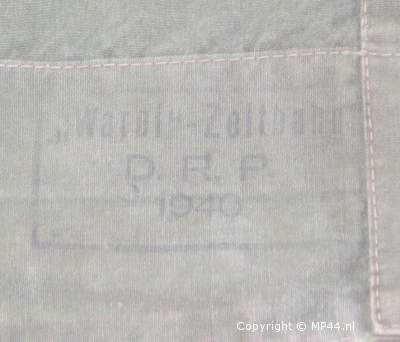
Here the markings on the field grey shelter quarter.
The shelter quarters are also known under the name
"Warei" Zeltbahn, as can be seen here.
furthermore it is marked:
D.R.P. (Deutsches Reich Patent)
1940
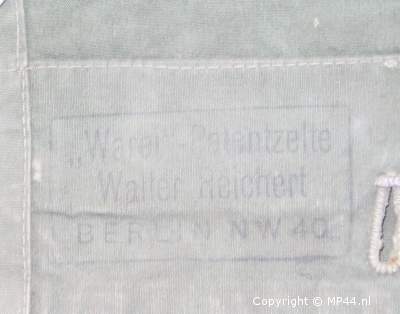
Other markings on the shelter quarter:
"Warei" - Patentzelte
Walter Reichert
BERLIN NW 40
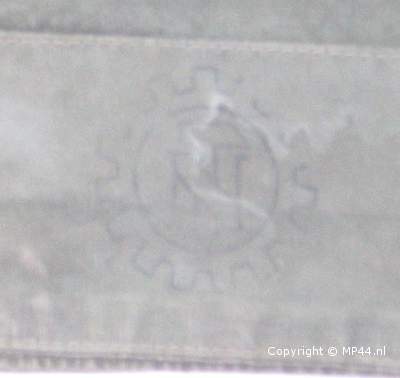
The other mark which shows this was not a military issue:
the symbol TN which stands for:
Technische Nothilfe
The following sections will explain the accesories, usage and methods of wearing the shelter quarter